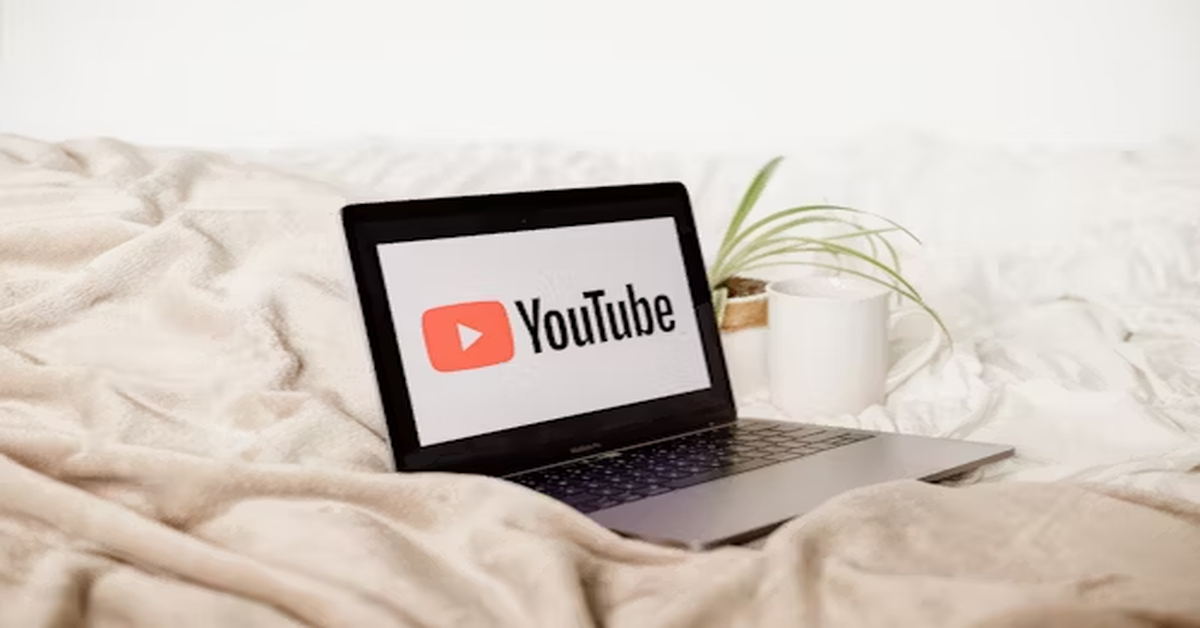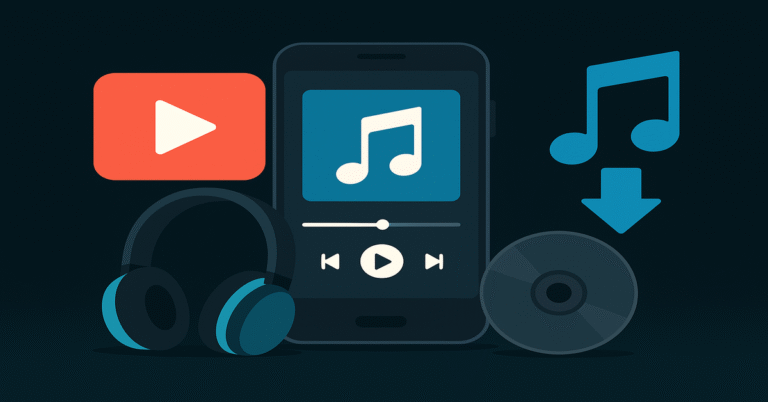
The world of digital media has evolved into a space where accessibility, quality, and flexibility are paramount. Among the various topics that often come up in this context is the phrase “YouTube to WAV”—a term that encapsulates the process of extracting audio content from YouTube videos and converting it into the WAV file format. To the casual user, this may seem like a straightforward concept. However, when examined in depth, the subject reveals layers of technical, cultural, and practical significance.
This article presents a comprehensive, 3000-word exploration of the YouTube to WAV concept, offering readers insights into how it works, why it matters, the benefits and limitations of WAV audio, technical aspects of the format, and the ethical implications surrounding media conversion. By the end, readers will not only understand the mechanics of conversion but also appreciate its broader relevance to music, audio production, and digital culture.
Understanding the Core Concepts
Before diving into the specifics of conversion, it is important to establish what both YouTube and WAV represent in this discussion.
- YouTube is the largest video-sharing platform in the world, hosting billions of videos spanning music, education, entertainment, and more. For many, it has become a primary source of audio content—whether that be songs, podcasts, or spoken lectures.
- WAV (Waveform Audio File Format) is an audio file format standard developed by Microsoft and IBM in the early 1990s. Unlike compressed formats like MP3, WAV stores raw, uncompressed audio, making it one of the highest-quality digital audio formats available.
Thus, “YouTube to WAV” essentially refers to the act of extracting the audio from a YouTube video and converting it into an uncompressed WAV file, preserving audio detail that can be used for professional, archival, or creative purposes.
Why WAV Matters in the Digital Era
In a landscape dominated by compressed formats such as MP3, AAC, or OGG, one may wonder why WAV is still relevant. The answer lies in quality and professional usage. WAV files retain original sound detail because they are lossless and uncompressed. This makes them ideal for:
- Music production: Artists and producers require high-quality audio samples.
- Podcast editing: Editors need clarity for mixing and mastering voices.
- Film and video production: Sound engineers rely on lossless audio for synchronization and sound design.
- Archiving: Institutions preserve audio history in formats like WAV for longevity.
Although WAV files are large compared to compressed formats, their accuracy and quality make them indispensable in professional workflows.
How YouTube Audio Works
Understanding YouTube audio is critical to understanding the YouTube to WAV process.
- Compression: YouTube compresses uploaded videos to balance quality and bandwidth.
- Streaming: Audio on YouTube is often streamed in AAC or Opus formats within an MP4 or WebM container.
- Quality Settings: Available playback quality depends on internet speed and the original file uploaded.
- Extraction: When users convert YouTube to WAV, the software or process captures the audio stream and re-encodes it into WAV.
Thus, the resulting WAV may not always be identical to the original studio recording uploaded to YouTube, but it provides the highest possible fidelity based on the available source.
Process of Converting YouTube to WAV
The general process of converting involves several steps.
Steps in Conversion
| Step | Description | Purpose |
|---|---|---|
| 1. Identify Video | Choose the desired YouTube video. | Establishes source of audio. |
| 2. Extract Stream | Software accesses audio stream from video. | Isolates sound from visuals. |
| 3. Decode | Compressed audio stream decoded to raw data. | Prepares sound for conversion. |
| 4. Encode to WAV | Raw audio written into WAV container. | Creates high-quality WAV file. |
| 5. Save File | WAV file stored locally. | Ready for editing, playback, or archiving. |
Each step ensures the preservation of quality and compatibility with devices and editing software.
Comparing WAV with Other Formats
To fully appreciate YouTube to WAV, it is useful to compare WAV with other formats.
Audio Format Comparison
| Format | Compression | File Size | Quality | Best Use Case |
|---|---|---|---|---|
| WAV | None (lossless) | Very large | Original quality | Professional audio, archiving |
| MP3 | Lossy | Small | Reduced detail | Everyday music listening |
| AAC | Lossy | Small-medium | Better than MP3 at same bitrate | Streaming services |
| FLAC | Lossless (compressed) | Medium | Original quality | Audiophile listening |
| OGG | Lossy | Small | Comparable to AAC | Open-source streaming |
This comparison highlights that WAV is unique for its uncompromised quality, though its size makes it less practical for casual use.
Practical Uses of YouTube to WAV
Converting YouTube to WAV serves multiple purposes:
- Music Sampling: DJs and producers may extract sounds for remixes.
- Educational Content: Lecturers or students can store high-quality speech for study.
- Transcription Services: Clear audio aids in accurate transcription.
- Accessibility: Listeners who prefer offline, high-fidelity audio can use WAV for playback.
- Archival Storage: Important speeches, performances, or oral histories can be preserved.
These practical applications demonstrate why YouTube to WAV conversions remain relevant across industries.
Advantages of YouTube to WAV
- High-Quality Audio: WAV files preserve maximum possible fidelity.
- Editing Flexibility: Ideal for sound editing software like Audacity or Pro Tools.
- Universal Compatibility: Recognized by virtually all audio devices and programs.
- Professional Standards: Required in many industries for broadcast or music production.
- Longevity: Better for archiving compared to lossy formats.
Limitations and Considerations
However, converting YouTube to WAV has certain limitations:
- File Size: WAV files are significantly larger than MP3 or AAC.
- Source Compression: If the YouTube source is already compressed, converting to WAV will not restore lost data.
- Storage Requirements: Large files demand more space on devices.
- Portability: Not always practical for casual listening on mobile devices.
Understanding these limitations helps users apply the process more strategically.
Ethical and Legal Considerations
It is important to acknowledge that downloading and converting YouTube audio may raise copyright concerns. YouTube’s terms of service prohibit unauthorized downloads. Thus, ethical use of YouTube to WAV should be limited to:
- Personal use (archiving, studying, listening offline).
- Non-commercial projects (classroom use, private editing).
- Creative commons content (videos explicitly licensed for free use).
Professional users must ensure they have the rights to the audio before converting.
Technical Anatomy of WAV
To fully understand the benefits of WAV, let us break down its technical structure.
WAV File Properties
| Feature | Description |
|---|---|
| Bit Depth | Typically 16-bit or 24-bit; affects dynamic range. |
| Sample Rate | Standard is 44.1 kHz; professionals may use 48 kHz or 96 kHz. |
| Channels | Mono, stereo, or multi-channel. |
| Compression | Usually uncompressed PCM, though WAV can support compression. |
| Compatibility | Plays on virtually any operating system without additional codecs. |
This structure explains why WAV is considered the gold standard for professional-grade audio.
Real-World Scenarios
To make the concept more relatable, here are some scenarios where YouTube to WAV may be applied:
- Music Producer: Extracts a live performance for remixing.
- Historian: Archives a speech uploaded by a museum.
- Podcaster: Saves interview audio for editing clarity.
- Educator: Downloads a lecture to preserve teaching material.
- Fan Collector: Keeps a personal archive of rare musical performances.
These examples showcase how diverse users find value in WAV conversions.
Future of YouTube to WAV
Looking ahead, the concept of YouTube to WAV will likely evolve with:
- Smarter Conversion Tools: Faster, higher-fidelity extractions.
- Integration with AI: Automatic labeling, noise reduction, and transcription.
- Cloud Storage: Direct saving of WAV files into online drives.
- Legal Services: Platforms may offer authorized downloads for educational or professional use.
The growing demand for high-quality audio ensures that WAV will remain significant, even as technology advances.
Lessons from YouTube to WAV
- Quality vs. Convenience: WAV prioritizes quality while other formats favor portability.
- Responsible Use: Conversion must respect copyright laws.
- Professional Standards: Industries continue to rely on WAV for serious projects.
- Technological Growth: Conversion tools are becoming faster and smarter.
- Audio Culture: The popularity of WAV reflects society’s appreciation for sound detail.
Conclusion
The concept of YouTube to WAV may appear simple on the surface, but it carries deeper implications for audio quality, technology, and digital culture. By converting YouTube content into WAV, users gain access to high-fidelity, professional-grade audio suitable for editing, archiving, and creative use. While challenges such as large file sizes and copyright laws remain, the benefits of WAV continue to make it an essential tool in music, education, and professional sound production.
Ultimately, YouTube to WAV represents a bridge between mass media accessibility and professional audio integrity—allowing anyone, from hobbyists to professionals, to preserve and work with sound at the highest standard possible.
FAQs
1. What does “YouTube to WAV” mean?
It refers to extracting the audio from a YouTube video and converting it into a WAV file, which preserves high audio quality.
2. Why would someone use WAV instead of MP3?
WAV is uncompressed and lossless, offering maximum sound quality suitable for editing, archiving, and professional use.
3. Does converting YouTube to WAV improve audio quality?
No. It preserves the available quality from YouTube but cannot restore data lost during YouTube’s compression.
4. Are there legal risks in converting YouTube to WAV?
Yes. Downloading without permission may violate copyright laws. Ethical use is limited to personal or authorized content.
5. What are the main uses of WAV files?
WAV is used in music production, film editing, archiving, education, transcription, and any context where audio quality is crucial.






